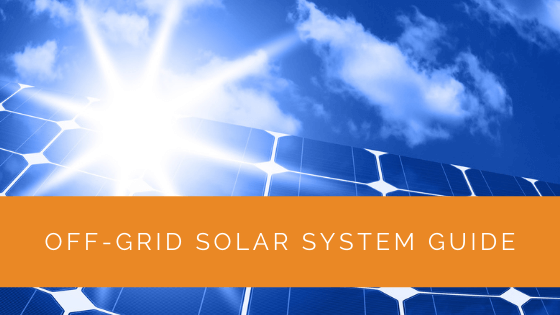Many people think that solar panels are all you need when setting up an off-grid solar system. However, in reality, you need several other components to have a fully functional off-grid solar energy system. Read on for our comprehensive guide to off-grid solar systems.
Contents
- 1 Key Takeaways
- 2 What Is an Off-grid Solar System?
- 3 What Are the Different Uses of Off-grid Solar Power?
- 4 What Equipment Does an Off-grid Solar System Need?
- 5 How Do You Size an Off-grid Solar System?
- 6 How Much Does an Off-grid Solar System Cost?
- 7 What Are the Advantages of Off-grid Solar?
- 8 What Are the Disadvantages of Off-grid Solar?
- 9 What Are Three Main Types of Solar Power Systems?
- 10 What Is the Difference Between Off-grid and On-grid Solar Energy?
- 11 What Is an Off-grid Solar System Kit?
- 12 Case Study: Implementing a Reliable Off-Grid Solar System for Remote Living
- 13 Expert Insights From Our Solar Panel Installers About Off-Grid Solar Systems
- 14 Experience Solar Excellence with Us!
- 15 Conclusion
Key Takeaways
- Off-grid solar systems are standalone systems that generate, store, and supply solar energy independently. They rely on batteries for power during unfavorable weather conditions, making them more expensive than grid-tied systems.
- Off-grid solar power has multiple uses, including electrification of remote areas, serving as an emergency power source during natural disasters, providing mobile power for expeditions, and offering stable backup power for areas with frequent outages.
- To size an off-grid solar system, you can base it on your current electricity usage or perform a load evaluation to determine your power needs. Off-grid systems typically consist of solar panels, inverters, charge controllers, mounting systems, and batteries.
What Is an Off-grid Solar System?
An off-grid system has all of the needed equipment to generate, store, and supply solar energy onsite. This is because off-grid solar systems usually work without a connection to external power sources, so they are often referred to as “standalone solar power systems”.
Unlike other solar energy setups, like the more popular grid-tied solar systems, off-grid solar systems usually rely on batteries to provide power when the weather isn’t suitable for producing solar.
However, batteries are pretty expensive, actually so much so that they cost more than the solar panels they’re paired with. The need to have ample battery storage in off-grid systems usually makes them a lot more expensive than grid-tied systems.
What Are the Different Uses of Off-grid Solar Power?
Electrification of Remote and Rural Areas
There are more than 2 billion people who lack regular access to electricity. Most of them live in rural households, and they generate electricity using petroleum or wood, both of which are hazardous and expensive forms of electric power generation.
Statistically speaking, people who lack access to stable electricity can hardly seek higher education or develop business and deal with comparably more serious economic problems.
Rural electrification deals with the supply and provision of electricity to villages and rural areas. It’s deemed a critical task for many economies in Asia, Latin America, and Africa.
Generally speaking, off-grid solar systems are easy to install, and under favorable sunshine conditions, they can produce long-term, independent, and sustainable electricity in remote and rural areas.
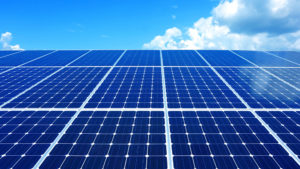
Emergency Source of Power in Case of Natural Disasters
Natural disasters may cause unexpected power supply disruptions. Unexpected power cuts are rarely countered effectively, and this could lead to disruptions in water supply, communication, and even healthcare, thereby endangering life and security.
Solar-powered Emergency Power Systems are designed to overcome temporary disruptions in power. They can be applied in areas affected by disasters or war zones where there’s an extremely high demand for quick electricity.
Mobile Solar Systems for Land and Sea Expeditions, Hiking, and Camping
Electricity could be needed anytime and anywhere. Some typical examples include hiking and camping tours that need electricity-powered lighting, navigation, communication systems, and electrical appliances on land and sea.
Some companies in the market provide a wide variety of different mobile off-grid system applications, like solar boats, solar scooters, solar bikes, and even solar drones.
Power Backups for Areas Facing Frequent Power Cuts
In many areas of the world, power grid connections don’t guarantee an uninterrupted power supply. Sudden power cuts as a result of power transmission malfunctions, fragile transmission lines or storms might hamper the normal operation of essential electric appliances on companies, hospitals, and public institutions and affect the cooling of food, beverages, etc.
Off-grid solar power systems provide a stable, economical, and long-term backup solution to overcome problems that occur from frequent power cuts.
Users of these systems will no longer be dependent on the power grid and temporarily evade interruption of their work and keep their electronic equipment and systems running.
Solar Water Pump Systems
These use the electricity generated by solar panels to pump water from deep well and over long distances. Solar water pumps can be used to supply water for crop irrigation, feedstock, and drinking.
Optimizing the size of the pump, controlling devices, motor, and a detailed system design based on the usage and location of the water pump is essential to guarantee optimal system performance and avoid any risks that could end up harming crops, animals, and people.
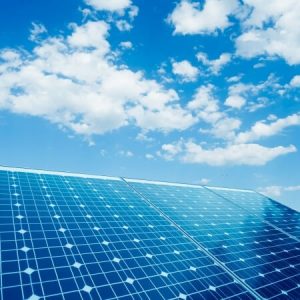
What Equipment Does an Off-grid Solar System Need?
In general, off-grid solar systems are made up of the following equipment:
- Solar panels
- Solar inverter
- Solar charge controller
- Mounting and racking system
- Solar battery
How Do You Size an Off-grid Solar System?
Determining the ideal system size for your use case is an early and crucial step when installing an off-grid solar system. It affects the kind of equipment you will need, the amount of work the installation requires, and the total cost of the entire project. Solar systems are generally based on the kind of power the system should provide.
There are two ways to figure out the number you need. These depend on:
- Your load evaluation
- Your current usage
Sizing an Off-grid System Based on Usage
If your main aim is maintaining your current lifestyle, this option is ideal for you. To do this, you can check your monthly power bills to determine your electricity usage in kilowatt-hours. You can then use this amount when sizing your off-grid system, though it’s advisable to go a bit higher – say 10% or more – to account for some solar inefficiencies.
Sizing an Off-grid System Based on Load Evaluation
Here, you will need to perform a full load evaluation to establish how much power you will need. This typically entails:
Calculating Your Total Electricity Usage
You start by listing out all of the appliances you will be using and how many hours you will be using each of them. You can then calculate the power consumption of each appliance and your total power consumption over a day.
When you know how many kWh you will be using in a day, you can size your solar panel system and the batteries accordingly.
Determine the Instantaneous Load Requirements
You also need to calculate how many of your appliances you will be running simultaneously. This helps calculate the instantaneous wattage requirements so that you can size the inverter correctly.
Determine the Battery Storage Requirements
The next thing you want to figure out is how much energy storage you need. Do you want to cover a day’s worth of storage, or do you want to have extra backup capacity?
Keep in mind that when it comes to solar battery backup, you want to store enough charge to cover at least 2 to 3 days of usage for the highest usage time of the year.
Figuring out the size of the crucial components of your solar system – the inverter, solar panels, and batteries – is enough information for vendors to customize a complete off-grid kit that’s suitable for your home.
How Much Does an Off-grid Solar System Cost?
Prices for off-grid solar power systems typically range from about $50 (for small chargers) to tens of thousands of dollars. This is because off-grid solar has a wide variety of applications.
The prices of an off-grid solar kit designed to power an entire home typically range from $12,000 to $50,000.
What Are the Advantages of Off-grid Solar?
Today, about 300,000 homes in the country are believed to be using off-grid sources of power for their energy needs. The following are some of the main reasons why people choose to go with off-grid solar:
Freedom from the Power Grid
One of the key reasons people choose to go off-grid is getting away from the grid, especially in areas prone to blackouts. When connected to the grid, you will be dependent on an external supplier (the utility company) for power. If the grid shuts off, your power supply shuts off too. This usually isn’t a problem until you’re hit with power failures and blackouts.
Environmental Conservation
As you probably already know, going off-grid helps reduce carbon emissions. Since much of the electricity supplied via the grid is sourced from fossil fuels, producing renewable electricity on your own will considerably reduce your carbon footprint.
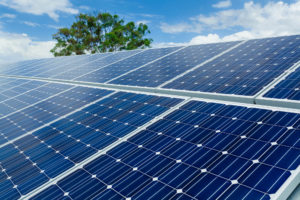
Promotes Energy Conscious Lifestyle
A connection to the grid will likely mean you don’t know your household’s power consumption habits well. You use the power as needed and then pay your utility bills as they come.
You’re virtually disconnected from where the electricity is coming from and where it’s being used. When you go off-grid, your attitude towards power changes completely. You have to closely follow your energy generation to ensure you don’t run out of electricity and regularly reassess and rationalize your energy consumption.
Ideal for Remote Locations
If you’re looking to power a building in a rural location, there might not be a grid to connect to in the first place. And when you contact utility companies for connection, they’ll probably say you’re out of their coverage area. Otherwise, they could offer to lay the wire to connect you at an astronomical cost. This makes solar an excellent and cost-effective alternative.
What Are the Disadvantages of Off-grid Solar?
Despite these great benefits, there are a number of valid reasons why a great majority of households in the country still choose to stay connected to the grid even when they install solar panels.
Off-grid Solar Is Actually Illegal in Some Locations
Although off-grid solar installation is catching on across the country, some counties and municipalities have made it illegal to unplug from the grid completely. These legal restrictions are usually common in metropolitan areas and rare in rural areas.
Can Be Expensive
Installing a solar setup that can supply an entire home with electricity tends to be very expensive. Compared to a grid-connected system, the off-grid option typically requires more solar panels, a higher-voltage capacity inverter, and a significant amount of solar battery storage.
Considering there’s no power grid to fall back on, such installations require you to purchase a diesel or gas-powered backup generator, which can be expensive to run.
It also adds to the urgency of repairing any faults in your off-grid system as you can’t rely on generators for too long.
Time Consuming and Complex
Producing enough electricity to meet the demands of your household is one extremely challenging task. It would be best if you had a pretty good understanding of how electricity works. And since electricity generation is a science, you will need to spend time precisely calculating the amount of power you need to generate based on your household’s exact usage patterns.
You will also need to spend time making sure that power wastage is kept at a minimum. You will also have to monitor your power supply constantly, given how unpredictable solar power generation can be.
It would be best to learn more about the equipment typically used to generate power and have the skills to troubleshoot and fix any faults that may develop.
There Are Often Better Alternatives for Backup Power
One of the main reasons why going with off-grid solar might not be for you is simply because there are better alternatives. A grid-tied solar system with a battery backup is perhaps the easiest and most efficient way of protecting your household from blackouts while helping the environment and saving money on utility bills. Another name for this setup is a hybrid solar system.
These hybrid systems use battery solutions like Tesla’s Powerwall, and are often significantly cheaper than off-grid systems. They also qualify for rebates and incentives like the SGIP rebate.
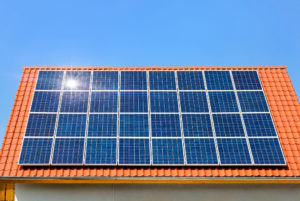
Major Lifestyle Sacrifices
If you ask anyone who has installed an off-grid solar system, they will probably tell you the same thing. Going off-grid will require you to re-evaluate your relationship with electricity completely.
The high initial cost of going off-grid means many people are forced to start with relatively small systems. The amount of available power will often be limited by inclement weather, where a cloudy day could result in reductions of 50% or more in the total power output.
Running out of power could leave you in a bind. You will either have to wait until the sun comes out again or produce power with a backup generator if you have one. These can be inconvenient and quite costly.
The constraints don’t end there. Many people who use these off-grid systems say that they need to conserve power, typically having to economize on water. This is because water pumps tend to consume a lot of power, translating into less frequent flushing and taking fewer showers.
Bigger power guzzlers, like air conditioners, can only be used for limited periods, if at all.
What Are Three Main Types of Solar Power Systems?
On-Grid
Grid-tied, grid-intertie, utility-interactive, grid back-feeding, and on-grid are all names that refer to the same thing. This solar power installation is also tied to a utility power grid.
Off-grid
An off-grid solar power system also referred to as off-the-grid or standalone solar system is the obvious alternative to the grid-tied variant. If you have access to the grid, an off-grid system is likely out of the question. Why?
Well, off-grid solar systems usually require battery storage and a backup generator to ensure stable access to electricity at all times. A battery power bank is quite expensive and will need to be replaced every ten years.
Keep in mind that batteries are complicated to handle and will decrease the overall efficiency of the system.
Hybrid
Hybrid solar systems essentially combine the best from off-grid and grid-tied solar power systems. They can be referred to as grid-tied solar with extra battery storage or off-grid solar with utility power backup.
If you have installed a grid-tied solar system in your home and drive an electric car, you already have this kind of a hybrid setup. Your electric vehicle is basically just a battery on wheels.
What Is the Difference Between Off-grid and On-grid Solar Energy?
In off-grid solar systems, your solar power system is independent and not connected to the power grid. In most cases, you need to invest in backup systems to produce your electricity and install an on-site battery storage to store some for use at a later point.
These are usually used at night when the solar panels are not producing enough electricity or when there has been a prolonged period of cloudy weather.
On the other hand, with on-grid systems, you are connected to the electricity power grid. You can utilize power from the grid as needed, and with a policy called net metering, you can put the electricity you generate from your solar panels back into the grid when you are not using it.
You will then pay the net power produced from your solar panel system and the power you pull from the grid (hence the title “net metering”) in your monthly or annual bills.
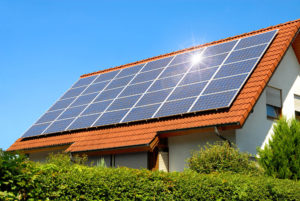
What Is an Off-grid Solar System Kit?
An off-grid solar power system kit usually contains everything you need to set up a standalone system with reliable off-grid solar power with battery storage. It includes an inverter/charger, solar panels, charge control, solar batteries, boxes, breakers, and more.
Case Study: Implementing a Reliable Off-Grid Solar System for Remote Living
Background
At Solar Panels Network USA, we specialize in designing and installing off-grid solar systems tailored to meet the unique needs of our clients. Recently, we worked with a client who wanted to set up an off-grid solar system for their remote cabin, which had no access to the utility grid. The client needed a reliable and sustainable power source to support their daily activities without relying on fossil fuels.
Project Overview
The client’s primary goal was to achieve energy independence by using a fully functional off-grid solar system. They required a system that could generate, store, and supply solar energy efficiently, ensuring a stable power supply even during cloudy days or at night.
Implementation
We began by performing a detailed load evaluation to determine the client’s energy requirements. This included calculating the daily power consumption of all appliances and identifying peak usage times.
- System Design and Component Selection: Based on the load evaluation, we designed a system incorporating high-efficiency solar panels, a robust inverter, and sufficient battery storage. We selected monocrystalline panels for their high efficiency and long-term reliability. The inverter was chosen for its ability to handle the peak power load, and the batteries were sized to provide at least three days of energy storage.
- Installation: The installation process involved mounting the solar panels in an optimal position to maximize sunlight exposure. We installed the panels on a south-facing roof with a tilt angle suited to the location’s latitude. The batteries and inverter were placed in a weather-protected shed close to the cabin to ensure easy maintenance and efficient energy transfer.
- System Testing and Client Training: After installation, we thoroughly tested the system to ensure all components worked seamlessly together. We also provided the client with comprehensive training on system operation, maintenance, and monitoring, ensuring they were fully equipped to manage their off-grid solar system.
Results
The off-grid solar system performed exceptionally well, meeting all the client’s energy needs and providing a reliable power source. Key outcomes included:
- Energy Independence: The client achieved complete energy independence, significantly reducing their reliance on fossil fuels and eliminating energy costs.
- Environmental Impact: The system’s renewable energy production reduced the client’s carbon footprint, contributing to environmental conservation.
- Reliable Power Supply: The battery storage ensured a consistent power supply, even during cloudy days or nighttime. The system’s design allowed for scalability, providing the option to add more panels or batteries if needed in the future.
The client expressed immense satisfaction with the system’s performance, noting the significant improvement in their quality of life and the peace of mind that came with a reliable and sustainable power source.
Summary
Our experience with this project highlights the importance of a well-designed and properly sized off-grid solar system. By conducting a thorough load evaluation and selecting high-quality components, we provided the client with a reliable and efficient energy solution tailored to their specific needs. At Solar Panels Network USA, we are committed to delivering top-quality off-grid solar solutions that empower our clients to achieve energy independence and sustainability.
Expert Insights From Our Solar Panel Installers About Off-Grid Solar Systems
Installing an off-grid solar system requires more than just solar panels. Batteries and inverters are crucial for storing and converting energy, especially during unfavorable weather conditions. Understanding these components is essential for a reliable off-grid setup.
Lead Solar Installer
Off-grid systems offer incredible benefits, especially for remote areas. They provide a stable and sustainable power source where grid access is impossible, significantly improving the quality of life in these locations.
Senior Solar Technician
Properly sizing your off-grid solar system is crucial. Conducting a thorough load evaluation helps ensure you have enough power to meet your needs, and this planning is vital for avoiding power shortages.
Solar Energy Consultant
Experience Solar Excellence with Us!
Trust in Solar Panels Network USA, where our seasoned experts deliver top-quality solar solutions for homes and businesses nationwide. With a legacy of countless successful installations and a commitment to sustainable energy, we’re your reliable partner in the solar journey. Ready for a brighter, eco-friendly future? Call us now at (855) 427-0058 and harness the power of the sun!
Conclusion
Off-grid solar is the most convenient source of energy when it’s hard to access the grid. It’s also an excellent option for sustainability-minded people committed to maintaining a low carbon footprint.
Other renewable sources of energy like hydropower and wind are more expensive and require stable access to water and wind supply.
However, if you’re a homeowner who lives in a city or near a city, off-grid solar power is probably not for you. This is because they are expensive, and they will rarely culminate in savings over utility power.
Plus, the high cost of installing off-grid solar means you may have to start with a relatively small system, and the limited power produced may impose significant lifestyle sacrifices.
About the Author
Solar Panels Network USA stands at the forefront of solar energy solutions, driven by a team of seasoned solar engineers and energy consultants. With over decades of experience in delivering high-quality solar installations and maintenance, we are committed to promoting sustainable energy through customer-centric, tailored solutions. Our articles reflect this commitment, crafted collaboratively by experts to provide accurate, up-to-date insights into solar technology, ensuring our readers are well-informed and empowered in their solar energy decisions.

